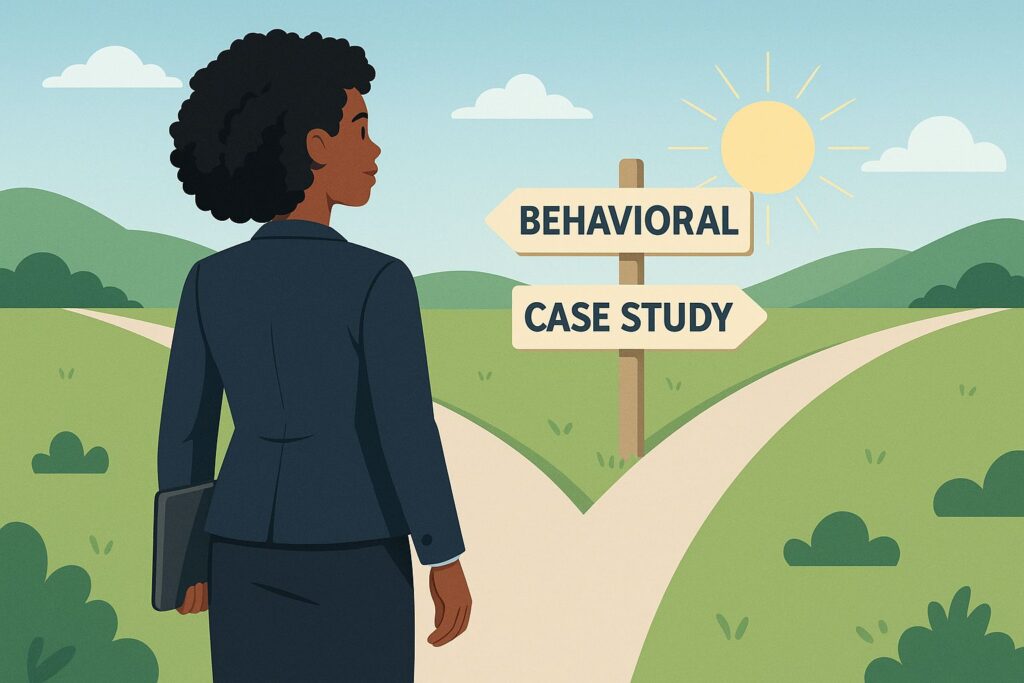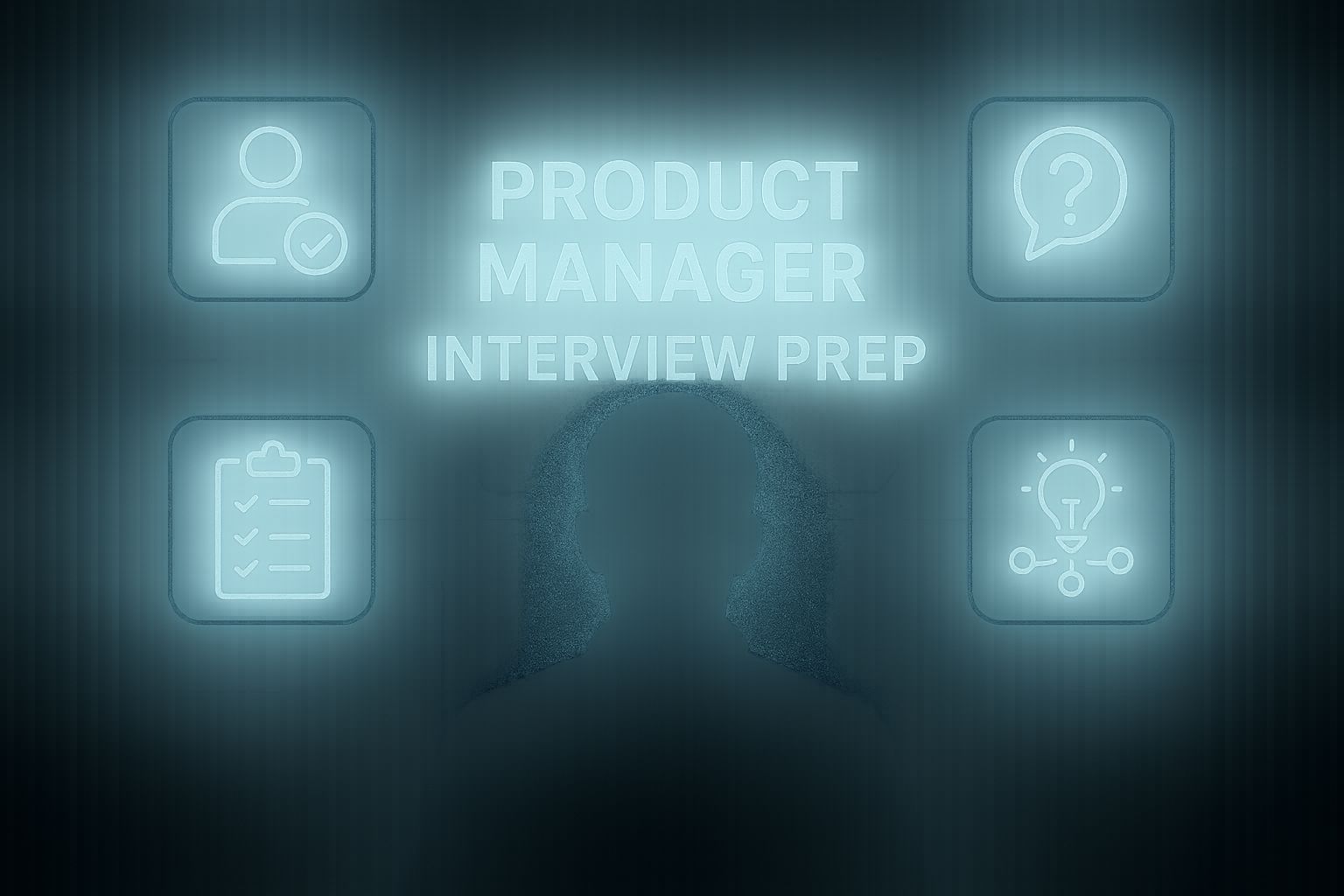So, you’re gunning for a Product Manager role? Fantastic choice! It’s one of the most dynamic, impactful, and rewarding careers in the tech world. But let’s be honest, the Product Manager interview process can feel like a gauntlet. It’s designed to rigorously test a unique blend of skills: strategic thinking, user empathy, analytical prowess, leadership, communication, and of course, “product sense.”
Many aspiring and even experienced PMs find themselves daunted by the multifaceted nature of these interviews, particularly the behavioral and case rounds. These aren’t just about what you know; they’re about how you think, how you act, and how you solve problems.
But here’s the good news: with the right preparation, you can not only navigate these rounds but truly shine. This guide will break down everything you need to know about acing your Product Manager behavioral and case interviews, transforming anxiety into confident execution. And remember, platforms like AceJobi.pro are designed to give you the practice you need to turn theory into polished performance.
Understanding the Product Manager Interview Landscape
Before diving into specifics, let’s understand why PM interviews are structured the way they are. Companies are looking for individuals who can:
- Identify User Needs: Deeply understand users and their pain points.
- Define a Vision: Craft a compelling vision for a product.
- Develop Strategy: Create a roadmap to achieve that vision.
- Collaborate & Lead: Work effectively with engineering, design, marketing, and sales without direct authority.
- Make Data-Informed Decisions: Use analytics and metrics to guide choices.
- Communicate Clearly: Articulate complex ideas to diverse audiences.
- Execute Relentlessly: Get things done.
To assess these, PM interviews typically consist of several rounds:
- Behavioral Interviews: Assessing your past experiences, soft skills, and cultural fit.
- Case Interviews: Testing your problem-solving, product thinking, and analytical skills.
- Technical Interviews (sometimes): Gauging your understanding of technology, especially for more technical PM roles.
- Design/Product Sense Interviews: Evaluating your ability to think creatively about product solutions. (Often part of case rounds)
- Strategy Interviews: Assessing your ability to think about market positioning, competition, and long-term product direction. (Often part of case rounds)
This guide focuses on the two most common and critical hurdles: Behavioral and Case interviews.

Part 1: Mastering Behavioral Interviews for Product Managers
“Tell me about a time when…” – these dreaded words often kick off a behavioral interview. The premise is simple: past behavior is the best predictor of future performance. For PMs, interviewers are keen to understand how you’ve demonstrated:
- Leadership & Influence: How do you lead without authority? How do you persuade stakeholders?
- Teamwork & Collaboration: How do you work with diverse teams (engineering, design, marketing)?
- Conflict Resolution: How do you handle disagreements with colleagues or stakeholders?
- Failure & Resilience: How do you react to setbacks? What have you learned from mistakes?
- Initiative & Proactivity: Do you identify and solve problems without being asked?
- User Empathy: How do you advocate for the user?
- Decision Making: How do you make tough calls, especially with incomplete data?
The STAR Method: Your Storytelling Superpower
The STAR method is your best friend for structuring compelling behavioral answers:
- S – Situation: Briefly set the context. What was the project, challenge, or environment?
- PM Twist: “Our team was tasked with increasing engagement for a mature B2B SaaS product facing new competition.”
- T – Task: What was your specific role or responsibility? What was the goal?
- PM Twist: “My task as the PM was to identify key user pain points hindering engagement and propose a feature set to address them within one quarter.”
- A – Action: What specific steps did you take? This is the core of your answer. Use “I” statements.
- PM Twist: “I initiated user research by conducting 15 customer interviews and analyzing support tickets. I then synthesized these findings into three core problem areas. I led brainstorming sessions with engineering and design to ideate solutions. I prioritized these solutions based on impact and effort, and then I presented the roadmap to leadership, securing buy-in.”
- R – Result: What was the outcome of your actions? Quantify it whenever possible. What did you learn?
- PM Twist: “As a result, we launched two key features that led to a 15% increase in daily active users and a 10% reduction in churn within three months. The key learning for me was the power of direct user feedback in uncovering non-obvious pain points.”
Common PM Behavioral Questions (and how to approach them)
- “Tell me about a product you launched. What went well? What would you do differently?”
- Focus: Execution, learning, self-awareness. Use STAR for both parts. Be honest about mistakes.
- “Describe a time you disagreed with an engineer/designer/executive on a product decision.”
- Focus: Conflict resolution, influence, collaboration, data-driven arguments.
- “Tell me about a time you had to make a decision with incomplete data.”
- Focus: Judgment, risk assessment, ability to move forward in ambiguity.
- “Describe a time you failed or a product you worked on failed.”
- Focus: Accountability, resilience, learning. Don’t blame others. Show what you learned and how you applied it.
- “How do you prioritize features when you have limited resources?”
- Focus: Prioritization frameworks (RICE, MoSCoW, impact/effort), strategic thinking, trade-offs.
- “Tell me about a time you used data to influence a product decision.”
- Focus: Analytical skills, data-driven mindset, ability to translate data into insights.
- “How do you say no to a stakeholder or a feature request?”
- Focus: Diplomacy, strategic alignment, communication skills.
Tips for Nailing PM Behavioral Answers:
- Prepare 5-7 strong stories: Cover common themes.
- Quantify your impact: “Increased conversion by X%,” “Reduced churn by Y%.”
- Align with PM principles: Show user-centricity, data-drivenness, and strategic thinking.
- Be authentic: Let your personality and passion for product shine.
- Practice, practice, practice: Rehearse your stories. Use a platform like AceJobi.pro for realistic mock interviews.
Part 2: Conquering Case Interviews for Product Managers
Case Product Manager interviews are where your product thinking is put to the test. You’ll be given an ambiguous problem and asked to break it down, propose solutions, and justify your reasoning. There’s rarely a single “right” answer; the interviewer is assessing your process.
Types of PM Case Questions:
- Product Design / Product Sense (“Design X for Y”):
- Examples: “Design a new product for finding a lost pet.” “Design a feature for Spotify for discovering new music with friends.”
- Focus: User empathy, creativity, ability to define goals, identify user segments, brainstorm features, prioritize, and define success metrics.
- Product Improvement (“Improve X”):
- Examples: “How would you improve Instagram Reels?” “How would you improve user onboarding for Netflix?”
- Focus: Diagnosing problems, understanding user goals and business goals, identifying pain points, proposing and prioritizing solutions, defining metrics.
- Product Strategy (“Should Company X do Y?”):
- Examples: “Should Google enter the [new market] market?” “What is your strategy for TikTok to compete with YouTube Shorts?”
- Focus: Market analysis, competitive landscape, company mission/strengths, opportunities/risks, go-to-market considerations, success metrics.
- Execution / Metrics / Analytical (“Diagnose drop in X,” “Define success for Y”):
- Examples: “Engagement on Facebook has dropped by 10%. How would you investigate?” “What are the key metrics for a new e-commerce checkout flow?”
- Focus: Structured problem-solving, data analysis, metric definition (AARRR, HEART, etc.), hypothesis generation, root cause analysis.
- Estimation (less common for PMs, but possible):
- Examples: “How many queries does Google get per day?” “Estimate the market size for electric scooters in New York City.”
- Focus: Logical thinking, breaking down complex problems into smaller parts, making reasonable assumptions.
Frameworks: Your Toolkit, Not a Straitjacket
Frameworks can help structure your thinking, but don’t be a slave to them. The interviewer wants to see your thought process. Adapt frameworks as needed.
- CIRCLES Method™ (Lewis Lin): Popular for product design.
- Comprehend the situation (clarify goals, constraints, users).
- Identify the customer (user segments, personas).
- Report the customer’s needs (user stories, pain points).
- Cut, through prioritization (which needs to address?).
- List solutions (brainstorm features).
- Evaluate tradeoffs (impact vs. effort, risks).
- Summarize your recommendation.
- AARM Method (or similar for metrics):
- Acquisition: How do users discover the product?
- Activation: Do users have a great first experience?
- Retention: Do users keep coming back?
- Monetization: How does the product generate revenue?
- (Sometimes Referral is added).
- The 5Es (or similar user journey mapping):
- Entice (Awareness)
- Enter (Onboarding)
- Engage (Core Value)
- Exit (Offboarding/Churn)
- Extend (Retention/Upsell/Advocacy)
- SWOT Analysis (Strengths, Weaknesses, Opportunities, Threats): Useful for strategy questions.
A General Approach to PM Case Questions:
No matter the type, a structured approach is key:
- Clarify (Ask Questions!):
- This is CRITICAL. Don’t jump to solutions.
- “What is the primary goal of this product/feature?”
- “Who is the target user?”
- “Are there any specific constraints (time, resources, technology)?”
- “What does success look like? How will we measure it?”
- “Is this for a specific platform (mobile, web)?”
- Take notes. Show you’re listening.
- Structure Your Approach:
- Tell the interviewer how you plan to tackle the problem.
- “Okay, to approach this, I’d first like to understand the users and their needs, then brainstorm potential solutions, prioritize them, and finally define how we’d measure success. Does that sound good?”
- Identify Users & Needs (User Empathy):
- Who are the different user segments?
- What are their pain points, goals, and motivations related to the problem?
- Use personas or user stories if helpful.
- Brainstorm Solutions (Ideation):
- Generate a wide range of ideas. Think broad, then narrow.
- Don’t self-censor initially.
- Consider different approaches (new features, improvements, partnerships, etc.).
- Prioritize & Justify (Trade-offs):
- You can’t build everything. How will you decide what to focus on?
- Use a simple framework like Impact vs. Effort.
- Consider strategic alignment, user value, technical feasibility, and business goals.
- Clearly articulate your reasoning.
- Define Metrics & Measure Success:
- How will you know if your solution is successful?
- Choose relevant, measurable metrics (e.g., conversion rate, DAU, retention, task completion).
- Consider counter-metrics (e.g., if optimizing for engagement, ensure it doesn’t hurt user satisfaction).
- Summarize:
- Concisely recap your recommendation and key rationale.
- Acknowledge any risks or next steps (e.g., “Next, I’d want to A/B test this solution…”).
Tips for Excelling in PM Case Interviews:
- Think Aloud: The interviewer wants to understand your thought process. Verbalize your assumptions, how you’re breaking down the problem, and why you’re making certain choices.
- Be User-Centric: Always tie your solutions back to user needs and value.
- Be Data-Driven (even if hypothetical): Talk about how you’d use data to inform decisions or measure success.
- Show Creativity & Product Intuition: Don’t just be analytical; demonstrate “product sense.”
- Manage Your Time: Case interviews are often timed. Practice pacing yourself.
- Draw on the Whiteboard (if available/virtual): Visualizing your thoughts can help both you and the interviewer.
- It’s a Conversation: Engage with the interviewer. They might offer hints or steer you if you’re going off track.
- Practice with Peers & Mentors: Get feedback on your structure, clarity, and ideas. AceJobi.pro can provide invaluable AI-driven feedback on your case delivery.

Ready to master your PM interviews? Start Practicing with AceJobi.pro!

Turn PM interview theory into practice with AI-powered coaching. Sharpen your STAR stories and case frameworks.
Part 3: Holistic Preparation & Mindset for PM Interviews
Beyond specific question types, overall preparation is key:
- Deeply Research the Company & Product:
- Understand their mission, values, target audience, business model, and competitive landscape.
- Use their product extensively. Form opinions. What do you love? What would you improve?
- Read their blog, earnings reports, and news articles.
- Develop Your “Product P.O.V.”:
- Have thoughtful opinions on products you use daily. Why are they successful? How could they be better?
- Follow industry trends and thought leaders.
- Practice Articulation:
- PMs need to be excellent communicators. Practice explaining complex ideas clearly and concisely.
- Record yourself answering questions.
- Prepare Insightful Questions to Ask Them:
- This shows your engagement and genuine interest.
- Ask about team culture, product strategy challenges, how they measure success, or their biggest opportunities.
- Manage Nerves & Be Yourself:
- It’s normal to be nervous. Practice helps build confidence.
- Remember, they want to see the real you and if you’d be a good fit for their team.
Conclusion: You’ve Got This!
The Product Manager interview journey is demanding, but it’s also an incredible opportunity to showcase your unique talents and passion for building great products. Behavioral interviews reveal your character and experience, while case interviews unveil your product mind.
By understanding what interviewers are looking for, diligently preparing your STAR stories, mastering case frameworks (and knowing when to adapt them), and practicing consistently, you can approach your PM interviews with confidence and clarity.
Remember the core tenets: be user-centric, think structurally, communicate clearly, and let your genuine enthusiasm for product management shine. With dedicated Product Manager interview prep, you’re not just preparing for an interview; you’re honing the very skills that will make you a successful Product Manager.
Now, go forth and ace those interviews!
How to Answer “Describe a Time You Dealt with a Difficult Colleague”
The moment an interviewer asks, “Tell me about a time you dealt with a difficult…
5 Mindfulness Techniques to Calm Interview Anxiety
That familiar feeling of pre-interview dread—the racing heart, the sweaty palms, the mind going completely…
“What’s Your Greatest Weakness?” Is a Trap. Here’s How to Ace It.
Your interview is going great. You’re building rapport, you’ve nailed the technical questions, and you’re…
How to Answer “Tell Me About Yourself” (A Winning Formula + Examples)
The interview begins. The hiring manager leans forward with a smile and says the five…
10 Things You Must Do the Night Before Your Job Interview
You did it. Your resume stood out, your cover letter shone, and now the big…
How to Answer “Tell Me About a Time You Failed” (STAR Guide)
Of all the questions an interviewer can ask, this one probably makes your stomach drop…
FAQ: Product Manager Interview Prep
How technical do I need to be for a PM interview?
This varies greatly. For most PM roles, you don’t need to code, but you need to understand technical concepts, speak intelligently with engineers, and grasp system design implications. For highly technical products (e.g., APIs, infrastructure), a deeper technical background is often required. Always check the job description. Behavioral questions might probe your experience working with engineering teams, and case questions might involve technical trade-offs.
What’s the biggest mistake candidates make in PM case interviews?
One of the biggest mistakes is jumping to solutions without first thoroughly clarifying the problem, understanding the goals, and identifying the target users. Another common error is rigidly applying a framework without adapting it to the specific question or failing to think aloud, leaving the interviewer guessing about their thought process. Remember to articulate your assumptions!
How many STAR stories should I prepare for behavioral rounds?
Aim for 5-7 well-crafted, versatile STAR stories that highlight different competencies like leadership, teamwork, conflict resolution, handling failure, initiative, and data-driven decision-making. Ensure your stories have quantifiable results and showcase your specific contributions as a Product Manager (or in a relevant prior role). Tailor your examples to the company and role you’re interviewing for.
Is it okay to say “I don’t know” in a PM interview?
While you should strive to answer every question, if you genuinely don’t know something specific (e.g., a niche market fact), it’s better to be honest than to bluff. You can say, “That’s not something I’m deeply familiar with, but here’s how I would approach finding out or thinking about it…” This shows intellectual honesty and problem-solving skills. For case questions, always try to propose a structured approach even if the domain is unfamiliar.
How can I practice for PM interviews effectively, especially case rounds?
Effective practice involves several methods:
1. Mock Interviews: Practice with peers, mentors, or career coaches. This is invaluable for getting real-time feedback.
2. AI Practice Tools: Platforms like AceJobi.pro offer AI-driven mock interviews that can help you refine your delivery and structure for both behavioral and case questions.
3. Solo Practice: Work through case questions from books (e.g., ‘Cracking the PM Interview,’ ‘Decode and Conquer’) or online resources. Articulate your answers out loud.
4. Deconstruct Products: Regularly analyze apps and websites. Ask yourself how you’d improve them or what metrics you’d track. This builds ‘product sense.’
5. Record Yourself: It helps identify verbal tics or areas where your explanations are unclear.








Leave a Reply